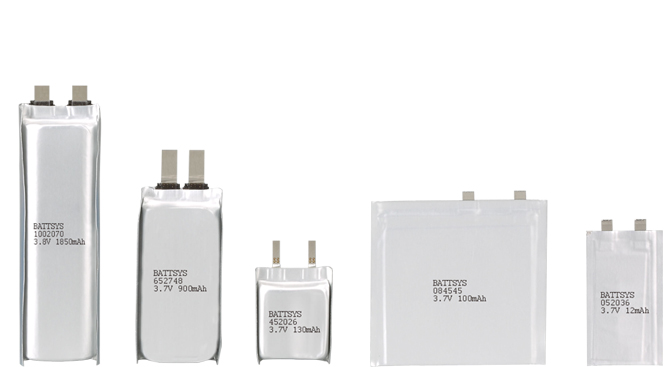What are the types and uses of lithium batteries?
Lithium batteries are constantly present in our lives, affecting every aspect of our lives. The mobile phones, computers, electric vehicles, and power banks we use in our daily lives all use lithium batteries. So, how many types of lithium batteries are there and what are their uses? Today, the editor will popularize the types of
lithium batteries and their respective uses for everyone!
Lithium batteries are mainly divided into four types: lithium iron phosphate batteries, lithium manganese oxide batteries, ternary
polymer lithium batteries, and lithium cobalt oxide batteries. There are currently three mainstream types of lithium batteries, mainly iron phosphate lithium batteries, manganese lithium batteries, and ternary polymer lithium batteries.
How many types of lithium batteries are there
1. Lithium batteries can be divided into square lithium batteries (such as commonly used mobile phone battery cells) and cylindrical batteries (such as 18650 batteries) according to their appearance
2. Lithium battery outsourcing materials are divided into aluminum shell lithium batteries, steel shell lithium batteries, and soft pack batteries

3. Lithium batteries are divided into positive and negative electrode materials (additives): LiCoO2 batteries or LiMn2O4 batteries, lithium iron phosphate batteries, and disposable lithium manganese dioxide batteries; Another point: Lithium ion LIB, polymer PLB.
Advantages, disadvantages, and applications of lithium batteries
1. Lithium manganese oxide battery
Lithium manganese oxide battery refers to a battery with a positive electrode made of lithium manganese oxide material. Lithium manganese oxide batteries have a nominal voltage of 2.5-4.2V, and are widely used due to their low cost and good safety.
Advantages: Low cost, affordable price, excellent safety performance, good low-temperature performance, with an efficiency of over 90% when discharging at minus 20 degrees Celsius
Disadvantages: Poor high-temperature performance, poor rate discharge, low cycle life, approximately 300 to 400 cycles, and easy expansion
Scope of application: Lithium manganese oxide batteries in China are mainly used as power batteries and applied in the field of new energy vehicles.
2. Ternary polymer lithium battery
Ternary polymer lithium batteries refer to lithium batteries with ternary positive electrode materials using nickel cobalt manganese oxide lithium or nickel cobalt aluminum oxide lithium, which are relatively balanced in terms of capacity and safety. The precursor product of ternary composite positive electrode material is made of nickel salt, cobalt salt, and manganese salt as raw materials, and the proportion of nickel, cobalt, and manganese in it can be adjusted according to actual needs. Ternary lithium batteries have a higher energy density, but their safety is often questioned.
Advantages: High capacity, nominal capacity of 1250mAh, good cycle life, generally 600 to 700 times, better than normal lithium cobalt oxide, good rate discharge
Disadvantages: Low battery energy density, worst safety performance among the three types of batteries, poor cycling stability and storage performance at high temperatures
Scope of application: Currently, ternary polymer lithium battery cells are widely used in the field of notebook batteries. The world's top 5 battery cell brands, SANYO, PANASONIC, SONY, LG, and SAMSUNG, have all launched ternary material battery cells.
Lithium iron phosphate battery
Lithium iron phosphate battery refers to a lithium-ion battery that uses lithium iron phosphate as the positive electrode material. The peak temperature of lithium iron phosphate can reach 350 ℃ -500 ℃, while lithium manganese oxide and lithium cobalt oxide are only around 200 ℃. Wide working temperature range (-20C -+75C), with high temperature resistance characteristics.
Advantages: Good rate discharge, no memory effect, can be charged and discharged as needed, high cycle life, generally around 1500 times, good high-temperature performance, can still work normally at 45 ℃, fast charging in electric vehicles, can be fully charged in 6 minutes, and can discharge 20 times.
Disadvantages: Poor low-temperature performance, greatly affecting its performance at -10 ℃. Due to the extremely high production process requirements, low productivity, and high cost of lithium iron phosphate, its price is relatively expensive.
Lithium iron phosphate battery (www.battsysbattery. com) Application scope: Suitable for large electric vehicles such as buses, electric vehicles, sightseeing buses, and hybrid vehicles; Light electric vehicles: electric bicycles, golf carts, small flatbed electric scooters, forklifts, cleaning vehicles, electric wheelchairs, etc; Electric tools: drills, chainsaws, lawn mowers, etc; Remote controlled toys such as cars, boats, airplanes, etc; Energy storage equipment for solar and wind power generation; UPS and emergency lights, warning lights, and mining lights; Replace 3V disposable lithium batteries and 9V nickel cadmium or nickel hydrogen rechargeable batteries in cameras; Small medical equipment and portable devices, etc.
However, it is currently widely used in the field of new energy vehicles, competing with ternary polymer lithium batteries and lithium manganese oxide batteries in the automotive industry.
4. Lithium cobalt oxide battery
Lithium cobalt oxide batteries can be considered the pioneer of positive electrode materials for lithium batteries, with superior electrochemical performance and high tap density. Lithium cobalt oxide batteries have stable structure, high capacity ratio, and outstanding comprehensive performance, but their safety is poor and their cost is very high. They are mainly used for small and medium-sized battery cells and are widely used in small electronic devices such as laptops, mobile phones, MP3/4, etc. The nominal voltage is 3.7V.
Advantages: Stable structure, high capacity ratio, outstanding comprehensive performance
Disadvantages: However, its security is poor and the cost is very high
Scope of application: Currently, it is only widely used in the digital electronic product market, such as laptops, mobile phones, MP3/4 and other small electronic devices. Very few people make automotive power batteries.
That's all for the introduction of the types of lithium batteries and their respective uses. I believe that through the above introduction, everyone has gained an understanding of the types, advantages, disadvantages, and respective uses of lithium batteries.
